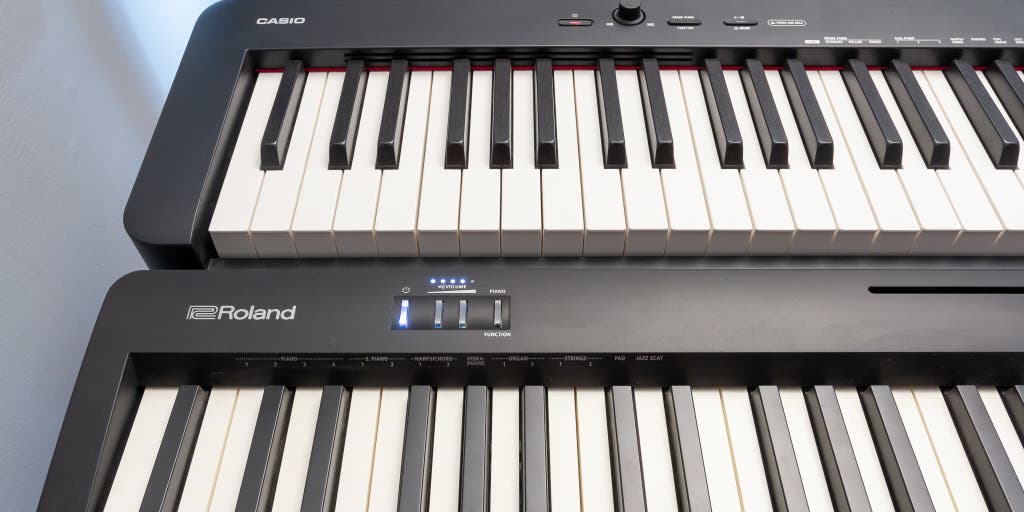1. Introduction
Digital pianos are an increasingly popular choice for musicians of all levels and styles. They offer the same sound quality as traditional acoustic pianos, but with the added convenience of being able to store and transport them easily. With so many digital piano models on the market, it can be difficult to know which one is right for you. In this article, we’ll review some of the best sounding digital pianos on the market and provide helpful tips on what to look for when shopping for a digital piano.
2. What to Look for in a Digital Piano
When shopping for a digital piano, there are several important factors to consider. First, consider the features that you need and make sure that they are included in your desired model. Some features to look out for include polyphony (the number of sounds that can be played simultaneously), touch sensitivity, sound quality, connectivity options, and recording capabilities. Additionally, it’s important to consider how much space you have available in your home or studio and whether or not you need a stand or bench for your instrument.
3. Best Sounding Digital Pianos on the Market
There are many great sounding digital pianos available on the market today. Here are some of our top picks:
4. Casio Privia PX-160 Review
The Casio Privia PX-160 is an excellent choice for those looking for a budget-friendly option with great sound quality. It features 88 weighted keys with adjustable touch sensitivity and 128 note polyphony – enough to handle even complex pieces of music without any dropouts in sound quality. Additionally, it has built-in speakers with two headphone jacks so you can practice silently if needed.
5. Roland RP501R Review
The Roland RP501R is ideal if you’re looking for an authentic acoustic piano experience without breaking the bank or taking up too much space in your home or studio. It has 88 weighted keys with adjustable touch sensitivity and 256 voices of polyphony – more than enough to handle even complex pieces of music without any dropouts in sound quality. Additionally, it has built-in speakers with two headphone jacks so you can practice silently if needed.
6 Yamaha P125 Review
The Yamaha P125 is a great choice if you’re looking for a mid-range option with plenty of features at an affordable price point. It has 88 weighted keys with adjustable touch sensitivity and 192 voices of polyphony – enough to handle even complex pieces of music without any dropouts in sound quality.Additionally, it has built-in speakers with two headphone jacks so you can practice silently if needed.
7 Korg B1SP Review
The Korg B1SP is perfect if you’re looking for an entry level option that still offers great sound quality at an affordable price point.It has 88 weighted keys with adjustable touch sensitivity and 128 voices of polyphony – more than enough to handle even complex pieces of music without any dropouts in sound quality.Additionally,it has built-in speakers with two headphone jacks so you can practice silently if needed.
8 Conclusion
In conclusion,when shopping around for a digital piano,there are several important factors to consider including features,sound quality,connectivity options,recording capabilities,size,weight,cost,etc.We have reviewed some of the best sounding digital pianos on the market today including the Casio Privia PX – 160,Roland RP501R,Yamaha P125,and Korg B1SP.Each one offers its own unique advantages but ultimately it comes down to personal preference when selecting which one is right for your needs.
9 FAQs About Digital Pianos
Q: What is MIDI?
A: MIDI stands for Musical Instrument Digital Interface – it’s a technology used by electronic instruments such as synthesizers, drum machines, samplers, etc., that allows them to communicate information like notes played, tempo changes, etc., between each other over cables or wireless connections using USB ports or Bluetooth technology respectively.
Q: Do I need special software/hardware?
A: Some digital pianos come equipped with their own software/hardware while others require additional equipment such as MIDI interfaces or external audio interfaces depending on what type of connection(s) they support (USB vs Bluetooth).

